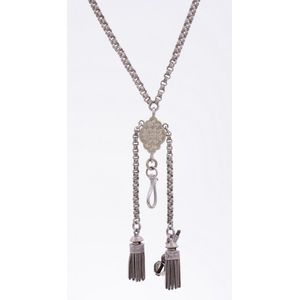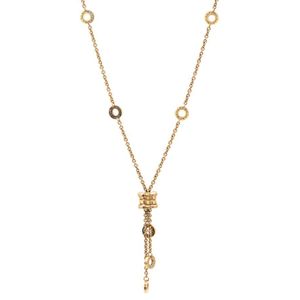Cartier Diamond Pencil Pendant with Longchain
You must be a subscriber, and be logged in to view price and dealer details.
Subscribe Now to view actual auction price for this item
When you subscribe, you have the option of setting the currency in which to display prices to $Au, $US, $NZ or Stg.
- Circa - A Latin term meaning 'about', often used in the antique trade to give an approximate date for the piece, usually considered to be five years on either side of the circa year. Thus, circa 1900 means the piece was made about 1900, probably between 1895 and 1905. The expression is sometimes abbreviated to c.1900.
- Openwork in Jewellery - Openwork, also known as pierced work, is a decorative technique used in jewellery making that involves removing or cutting out sections of metal from a piece of jewellery to create a pattern or design. This technique can be used in a wide range of jewellery styles, including necklaces, bracelets, earrings, and rings.
Openwork jewellery can be made using a variety of different techniques, including hand carving, sawing, and laser cutting. The design can be simple or complex, and can feature a range of different shapes and motifs, from delicate floral patterns to bold geometric designs.
One of the advantages of openwork jewellery is that it can add visual interest and depth to a piece without adding a lot of weight or bulk. This can be particularly appealing in larger pieces, such as necklaces and bracelets, where heavy materials can be uncomfortable to wear. - Obverse - Obverse means the front face of a coin or medal, and the reverse means the back face. The obverse of a coin is commonly called heads, because it often depicts the head of a monarch or famous person.
This item has been included into following indexes:
- Cartier (France), jewellery
- lockets - diamond 3,475
- pendants and lockets, gold - gold with diamonds 3,395
Visually similar items

An antique necklace, the rope twist chain with gold ball spacer links and varying fobs, including t-bar, tassel and propelling pencil, in 9ct gold, total weight 32.3gms, total length 660 mm

An antique silver Albertina hung with two tassels.

A drop pendant necklace by Bvlgari, from the B.Zero1 collection, in 18ct gold, total length 440 mm, boxed with papers.

An 18ct gold necklace; foxtail chain with gathered with a knot motif and suspending 2 tassel drops, length 54 cm. Wt. 16.9g
